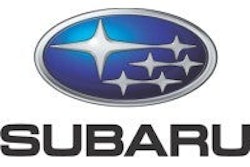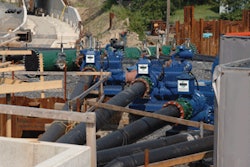
To meet recently proposed exhaust emission standards, the Environmental Protection Agency (EPA) says manufacturers for the first time will use catalytic converters in many types of lawn equipment, garden equipment and small watercraft.
While using catalytic converters is one way to meet exhaust emission standards for nonroad spark-ignition (SI) engines rated below 25 horsepower, it is not the only way. Instead of using exhaust catalysts, Kohler will use another form of after-treatment, its own unique Exhaust Induction System for an interim solution. Subaru Robin's solution includes an efficient combustion chamber and redesigned piston rings to reduce oil consumption. Kohler's final solution also will include an efficient combustion chamber and redesigned piston rings.
Current EPA regulations for small engines focus on reducing hydrocarbons, which can be done by controlling engine oil consumption through tight engine manufacturing standards, says Richard Koehl, Kohler director of marketing and quality.
"The proposed EPA guidelines are much more stringent than the old ones," Koehl says. "You must have some form of after treatment or better manufacturing technology to achieve the levels they're looking for."
Specifically, the proposed standards include hydrocarbon and nitrogen oxides exhaust emission standards of 10 g/kW-hr for Class I engines starting in the 2012 model year and 8 g/kW-hr for Class II engines starting in the 2011 model year. EPA is not proposing new exhaust emission standards for hand-held equipment. For spark-ignition engines used in marine generators, EPA is proposing a more stringent Phase 3 CO emission standard of 5 g/kW-hr, and this would apply equally to all engine sizes subject to the Small SI (spark-ignition) standards.
When the proposed standards are fully implemented, EPA says the new engines' exhaust will have 35 percent less hydrocarbon and nitrogen oxides emissions.
"Regulations that have applied to automobiles are being applied to small, general-purpose industrial engines," says Brad Murphy, Subaru Robin vice president of sales and marketing. "If you add regulations to a $30,000 car, you can maybe raise the price $200 or $300, a percent of the overall vehicle value that's not that much. But you add new technology to small engines and you have to be careful, you could increase the value of the product sold to an OEM significantly. The challenge engine manufacturers face is how to meet the regulations and lower emissions while keeping the cost reasonable so people can afford the product."
Exhaust induction
Newly proposed EPA requirements will affect most of the million-plus engines Kohler produces annually for consumer lawn and garden, commercial turf, industrial/construction and rental applications. Other engines produced by the company are over 25 horsepower and subject to different EPA requirements.
Kohler's strategy to exceed recently proposed exhaust emissions regulations for small engines involves various technologies.
Essential to these is Kohler's patent-pending Exhaust Induction System, which will be added to Kohler's Courage family of engines first for the California market. The system introduces a precise measure of oxygen into the exhaust and creates chemical reactions similar to those that take place in a catalytic converter to reduce harmful pollutants.
"Basically a new air stream is introduced into the exhaust section," Koehl explains. "You then have an equivalent chemical reaction - but without the heat portion required of the catalyst. Instead, air is burned downstream of the exhaust poured on the engine."
Continuous oxidization of carbon monoxide and hydrocarbons, the main contributors to smog, achieves the same exhaust emission reduction levels as using an after-treatment catalyst, Koehl says.
But Kohler's technological improvements will not stop there. Koehl says the company will continue developing its technology and processes to manufacture an engine that requires no after-treatment for exhaust. By 2011, when the EPA ruling that impacts most Kohler engines goes into effect, he says Kohler will have a solution with "exhaust-out emissions," with no additional parts required.
Redesigned piston rings
With more than 1.2 million engines produced annually for construction, industrial, agricultural, recreational and rental markets, Subaru Robin is the fourth largest engine manufacturer in the world. About five years ago, Subaru Robin came out with a more efficient combustion chamber for its engines. In the EX Series chain-driven overhead cam engine line, the carburetion tolerances have been continually refined since then. This summer the company began improving the piston rings and subsequently, the oil control, on all of its engines, which range from 4 to 25 hp.
Subaru Robin's new expandable piston rings make a tighter seal between the piston and the cylinder wall to make sure combustion pressure stays in the combustion chamber, while oil stays in the crank case.
Summarizing the benefits, Murphy says, "You not only consume less oil, you get less contamination of the oil by combustion, and you extend the life of the oil. You don't have to change it as often, which saves on the cost of oil, and the time to drain and refill it."
Maintenance implications
By going with other options instead of a catalytic converter, manufacturers say they will deliver a less complex engine with less service issues in the long run.
Aside from changing the oil less often when Subaru Robin and Kohler engines are used in equipment, the jobs of service technicians will be very similar to what they are now.
When service technicians work on exhaust systems with catalytic converters, however, service issues would be the same as they are with cars. If an engine were to run poorly, the catalytic converter could be the cause. Once a catalytic converter wears out, it can become more restrictive and cause excess back pressure on the engine, which would make it run poorly.
Service technicians also must watch for certain conditions if an exhaust system has a catalyst. With exhaust induction, an engine can run in those same conditions and really not see the safety problem a catalyst can pose, Koehl says.
Whether operating or maintaining equipment with catalytic converters, safety precautions must be taken to allow sufficient cool down time during the catalyst after-treatment. Catalysts run between 1,150-1,450 degrees Fahrenheit.
'Fuel' for small engines
With many manufacturers expected to use catalytic converters for the first time, it's clear that small engines have not kept pace with automotive engines.
"With new regulations, small engine designers must really look at the different aspects of engine combustion," Koehl says. "I only see the EPA requirements lending some fuel to the small engine industry, solving things that the automotive industry has solved while keeping the technology cost-effective for people who buy lawnmowers and garden equipment."
For example, Murphy predicts small engine manufacturers will add fuel injection. "You can put fuel injection on right now but the cost is too high," he says. "We and others are developing fuel injection systems that can approach the cost of a carburetor."
With more regulations for less emissions, he says, "We're seeing more and more sophisticated engines." For service technicians working on small engines, work could start becoming more interesting or more difficult, depending on how they look at it.




















